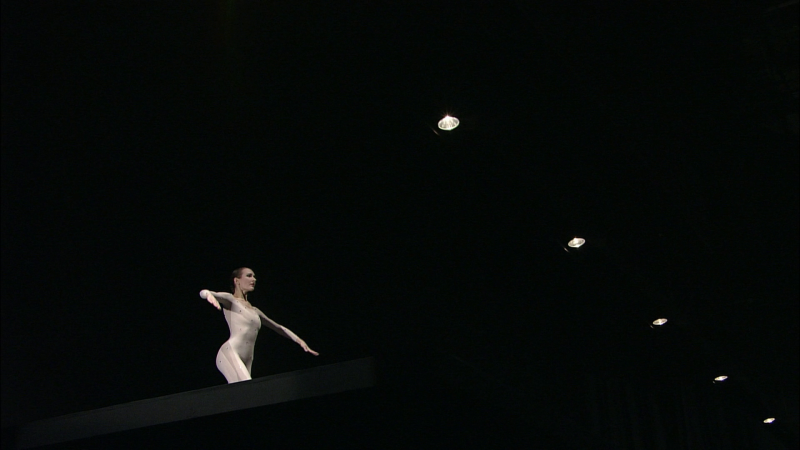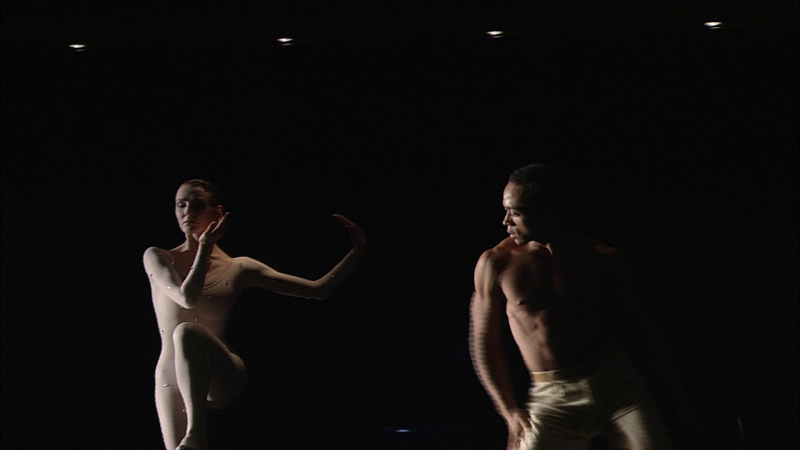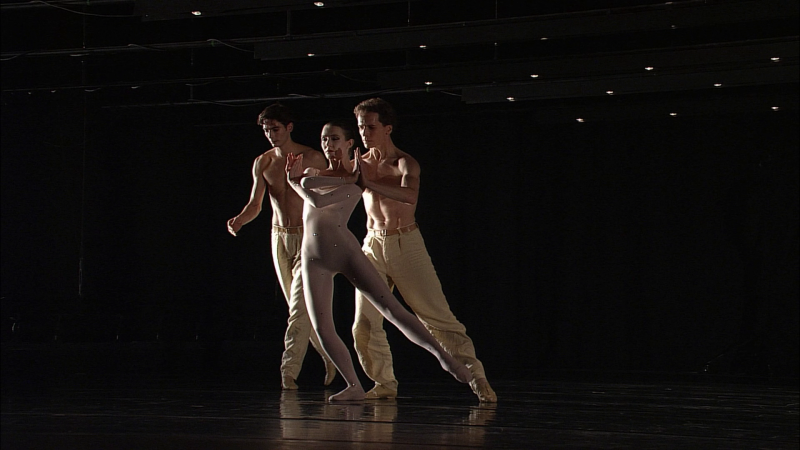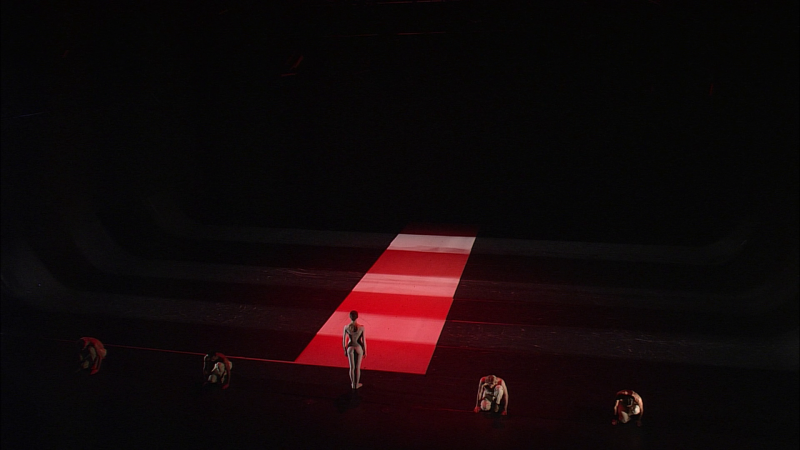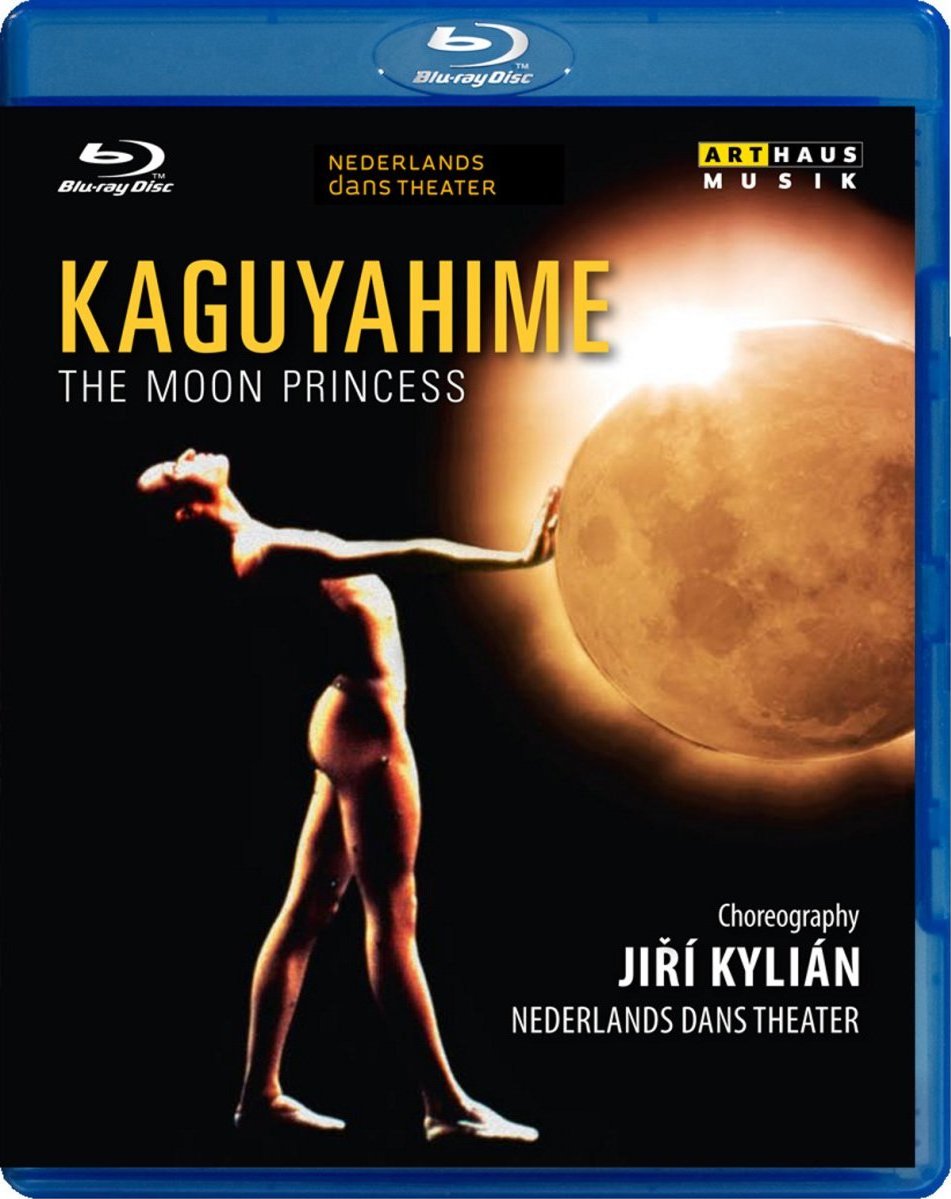
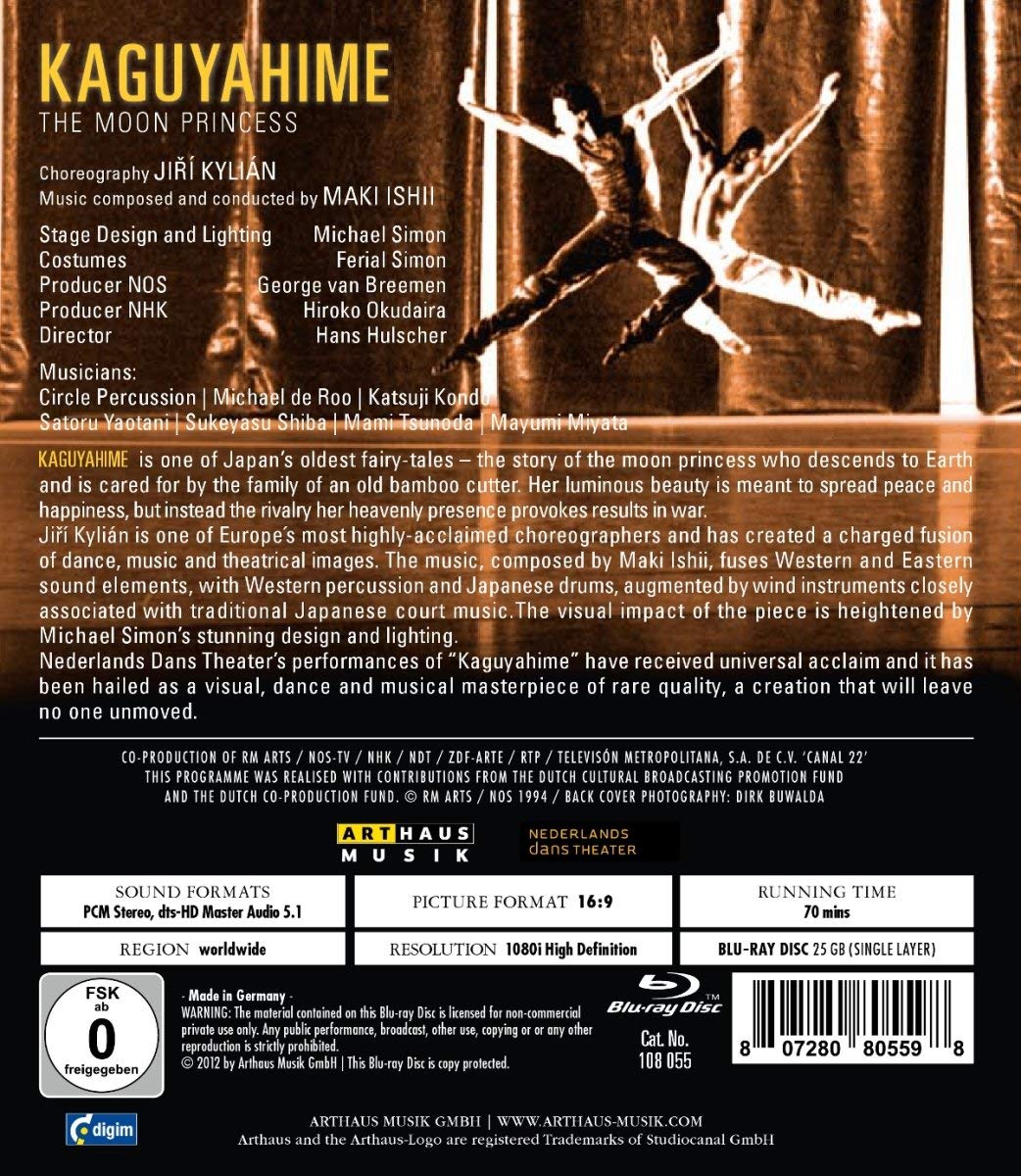
Kaguyahime - The Moon Princess modern ballet at the Nederlands Dans Theater. Choreography by Jiří Kylián to music composed for this ballet and conducted by Maki Ishii. Directed by Hans Hulscher. Stars dancers Fiona Lummis, Paul Lightfoot, Martin Muller, Ken Ossola, Johan Inger, Patrick Delcroix, Glenn Edgerton, Karine Guizzo, Brigitte Martin, Lisa Drake, Susan Laraghy, Carolina Armenta, Jorma Elo, Bruce Michelson, Sol Léon, Nancy Euverink, Cora Kroese, Philippa Bukinham, Lorraine Blouin, Owen Montague, Ivan Dubreuil, and Zane Booker. Features musicians Michael de Roo, Katsuji Kondo, Satoru Yaotani, Sukeyasu Shiba, Mami Tsunoda, and Mayumi Miyata. Stage design and lighting by Michael Simon; costume design by Férial Simon; NOS production by George von Breeman; NHK production by Hiroko Okudaira. This ballet was created in 1988. Nobody is saying what date this production was filmed. But this does appear to be a "cleaned up" re-release in 2012 of a DVD title that came out in 1994. Disc has 5.1 dts-HD Master Audio sound, which should perhaps be taken with a grain of salt. Grade: B
This title will probably appeal to you if you like the HDVD ballet titles Siddharta, Caravaggio, or McGregor Triple Bill, or the dance titles Amelia or Alonzo King LINES Ballet. It's based on the Japanese Kaguyahime tale, said to be the oldest Japanese fairy story and also the first example of science fiction in world literature.
It's really just another fish-out-of-water story, such as Ondine, Rusalka, or The Little Mermaid, in which an other-worldly spirit slums with men, with bad results for all. But Kaguyahime is not from a wet spot; she comes from the driest place we have been to: the moon. She's not a water spirit: she's a beam of light. There's a helpful synopsis of the fairy tale in the keep-case booklet as well as a track-by-track description of the 8 scenes in the libretto. This gets you started with a basic idea; the production is broad enough for you to read into it any political or philosophical interpretation you desire. Later in this review I'll give you my telling of the story; yours will doubtless be better.
The music is provided by 3 traditional Japanese musicians (in historical dress), 2 with flutes, and 1 with a sho, the Circle Percussion group (pumped up to about 17 players), and enough Japanese drums (including one bigger than a Smartcar), tympani, and xylophones to drive all the neighbors in your apartment building out into the street.
Fiona Lummis as Kaguyahime has a relatively static role with numerous slow moves more like mime than dance. I think she came to the world of men to teach them to be content and serene. But the men want none of that—they crave possessions, empires, and action. When men threaten Kaguyahime, her father and mother on the moon can't save her. But her grandfather is the sun: he burns the men (+ audience and HD cameras) until they flee the field and let Kaguyahime go home.
SQ is reasonable---the score will reveal if there are any rattles in speakers or other gear. PQ is fine with good resolution and reasonable color fidelity for this film shot mostly on a dark stage. The picture content is good with numerous full-stage shots as well as a spectrum of closer shots. Even shooting directly into numerous stage lights (mounted to shine horizontally across the stage) is forgiven because the film has some of the feel of war reportage about it. Although this was, I think, filmed in live performance, the camera seems to have the run of the stage. The choreography is exciting. The props and costumes, while eclectic, fit well into the concept of the director. I especially liked the girl warriors in the battle scenes dressed in elegant black, full-skirt cocktail dresses and matching pantyhose.
Michael Simon's lighting is especially striking. This is the only production I remember where a big investment was made to beautify the dance floor. I guess this was maybe not that impressive to spectators in orchestra seats. But it probably looked great from the balconies and is very effective in the HT.
Now for some screen shots:
First I'll show you the instruments used in the trenchant original music commissioned for this piece. First we see the Japanese drum squad, whom I calls the "Khakis" :
Then we have the western percussion section, all dressed in black velvet and leather (I think) which I call the "Velvets". You will see more of the Khakis and Velvets later:
The ancient Japanese instruments connect the percussive dots. No matter how hard the drummers work at it, these winds can cut through with their weird eastern melodies. Here's a close-up shot of 2 of the 3 Japanese traditional players:
Here you see the arrangement of the musicians in the pit:
In addition, there are stage musicians. Shown here is a giant Japanese drum on stage. This drum is a prominent image throughout and doubles as a prop representing the sun.
Princess Kaguyahime (whom I call Kagi for short) is the daughter of the King and Queen of the moon. Her grandfather is, of course, the sun, Emperor of the universe. As a punishment, Kagi is sent to the earth with the mission of creating a reign of peace and brotherly love among the people there. Here Kagi is seen descending on a platform from the heavens:
In a long solo, Kagi announces the new era that she brings to men:
The men are dazzled by her beauty. But they don't understand her message: they only want to possess her. Here are the five suitors from the fairy tale who will try to court her:
Poor Kagi is astonished. As an immortal, she has no reference to comprehend the passion men feel for her. (Kagi is different from the water spirits in folklore, most of whom have had or think they desire carnal knowledge of a man.)
Kagi sends the men away. She is invited to be guest of honor at a celebration of her arrival. Here you see an neat scene change created with the use of lighting and a sliding black floor cover that is retracted to both sides of the stage:
The village Kagi is visiting is in Khaki Kountry. Kagi sees folk dancing that reminds me of the Golden Age of American musicals with shows like Oklahama or Guys and Dolls:
But soon the Velvets appear and it's time to rumble:
The skirmishes lead to war with military and civilian combatants of both sexes:
Now every dancer in the company is putting all they have into the fray (note the black-and-white checkerboard floor):
The Khaki and Velvet musicians in the pit bound up onto the stage like sailors jumping to battle stations. More drums are waiting in the shadows.
Now we see the drummers in the vanguard leading a battle of total annihilation. Alert: this scene could result in the annihilation of one or more speakers in your home theater:
We never find out what is left after the battle. But Kagi prays to her parents asking for forgiveness and permission to return to her serene home on the moon:
But there will be one more trial for Kagi. The Emperor (on earth) has heard of the celestial visitor and the war between the Kahis and Velvets. He arrives to investigate and falls in love with Kagi:
The Emperor offers to make Kagi Empress. In the alternative, he threatens to stuff her in a bottle and throw her into his harem:
The sun pulls rank and saves Kagi:
Who then returns to the ether from which she came:
When I first saw this, I thought I was seeing a recently shot performance that was a bit soft due to the dark stage. If I had realized it was filmed in 1994, I probably would have excluded this from our website as legacy material. But I got hooked. Only later did I look closely at the primitive artwork on the keepcase and do some research that suggested 1994 as the correct date of origin. This means this title is one of the very earliest films that we have on this website.
But to me, this production doesn't look dated, and I think it's pretty impressive to see something made in 1994 look this good in HD TV. The sound recording must have been especially well preserved, but purists will probably be critical of the upgrade to lossless sound. In summary, I give this unusual and well-directed show an B. This may be an important item for anyone interested in stage lighting or east-west fusion music. This mini-review will probably give you a good idea if you will like it. But in any case, I warrant that if you watch this, you will not nod off.
OR





